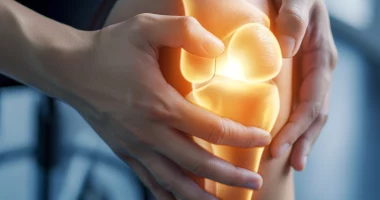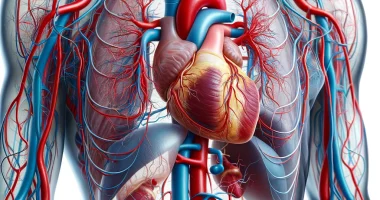Hip contracture
Definition
Joint contracture is a stable limitation of movement in a joint. It is manifested by reduced or absent movement, impaired function, and sometimes forced limb position. The significance of the pathology depends on the localization of the contracture and the degree of movement restriction. Diagnosis is made based on symptoms, measurement of the volume of movement, radiography of the joint, and other studies. Treatment can be both conservative and surgical. The prognosis depends on the age and cause of the pathology; fresh contractures are better treated than old ones.
General information
Joint contractures (from Latin contractio – to bind) are pathological conditions accompanied by persistent restriction of movements. They are quite widespread in practical traumatology and orthopedics. Often, it becomes a cause of limited working capacity and disability. The greatest clinical significance is contractures of large and medium-sized joints of the extremities: ankle, knee, hip, elbow, and shoulder. Contractures of the ankle, knee, and elbow are the most common. Treatment is usually engaged in orthopedic traumatologists. Depending on the cause of the development of pathology, neurologists, surgeons, rheumatologists, and other specialists can also participate in the treatment. This disease will be considered an example of contracture of the hip joint in this article.
Causes
Hip contracture is a pathologic condition associated with restricted movement caused by trauma or disease that has disrupted the joint’s anatomy and function.
Joint contractures are a polyetiologic condition. They can be caused by various reasons, including disruption of the joint configuration, scar changes, pain syndrome, muscle diseases, disorders of nerve regulation, inflammatory and degenerative-dystrophic processes, congenital developmental disorders, prolonged immobilization, and others. They often occur in the remote period after skeletal trauma, especially severe.
Classification
The significant heterogeneity of this pathology, both etiologically and in terms of the variety of structural changes in the joint area and periarticular tissues, determines the existence of many classifications of joint contractures. Congenital and acquired contractures are distinguished along with active (neurogenic) and passive (structural) contractures. Taking into account the cause of development, all structural contractures of joints are divided into:
- Arthrogenic – the cause of movement restriction is pathology of the joint itself, such as misalignment of the articular surfaces due to a fracture, suppurative arthritis, or deforming osteoarthritis.
- Myogenic – movements in the joint are restricted due to muscle pathology.
- Dermatogenic – the cause of limitation of movement is scars on the skin, usually after extensive burns, less often – after purulent processes (abscess, phlegmon), lacerations and bruises in the area of the joint and the nearest segments of the limb.
- Desmogenic contractures limit movements due to connective tissue scarring. These contractures are often combined with spermatogenic contractures, but they can also develop in isolation.
- Ischemic – usually occurs in fractures accompanied by prolonged and significant, but not complete, restriction of arterial blood supply to the limb. They are often formed in childhood in fractures of the forearm, condyle, and suprascapular fractures of the shoulder.
- Immobilization occurs due to prolonged immobilization. It is usually caused by a combination of several factors, such as a reduction in the elasticity of the joint’s soft tissue structures and shortening of muscles.
Some specialists separate joint contractures arising after gunshot wounds into separate groups. Neurogenic joint contractures are also divided into several forms, taking into account the cause of occurrence:
- Central neurogenic: cerebral – contractures of joints arising from traumas and diseases of the brain (ischemic and hemorrhagic stroke, encephalitis, severe traumatic brain injury, cerebral palsy), spinal – developing in lesions of the spinal cord (tumors, spinal cord injury, spinal circulation disorders).
- Peripheral neurogenic: painful – caused by the forced position of the limb developed due to pain syndrome; reflex – caused by prolonged nerve irritation, leading to an increase in muscle tone; irritation-paretic and caused by a violation of autonomic innervation.
Symptoms of joint contracture
The primary manifestation of the pathology is a restriction of movements of varying degrees of severity. Depending on the localization of the contracture, patients may complain of impaired grasping of objects with the hand, inability or difficulty in performing certain household activities (combing, dressing, eating), impaired support, and walking. Examination reveals a decrease in the volume of active and passive movements and muscle atrophy. Post-traumatic or post-inflammatory scars and deformities are often detected.
Diagnosis
Hip contracture is diagnosed by measuring the volume of active and passive movements. X-ray examination of the joint is mandatory. Otherwise, the scope of additional studies depends on the nature of the pathology that caused the limitation of movement. In passive contractures, the patient may be referred to an MRI or CT scan of the joint. Neurogenic contractures require consultation with a neurologist (with hysterical contractures – psychiatrist), electromyography, and various tests may be performed. If nonspecific or specific inflammation is suspected, consultations with appropriate specialists are prescribed: surgeon, rheumatologist, etc.
Treatment of hip joint contracture
Treatment should be comprehensive, considering the cause of development and the nature of pathological changes. Conservative therapy of structural contractures includes massage, physiotherapeutic treatment, a set of therapeutic exercises with active and passive exercises, and muscle relaxation exercises. If the tissues have retained sufficient elasticity, step-by-step plaster bandages or one-stage redressing (forced straightening of the limb) are used.
Mechanotherapy with the use of block installations and pendulum devices is practiced. To reduce inflammation and pain syndrome resulting from the significant load on the affected joint, analgesics and NSAIDs are prescribed, and intradermal blockades are performed. Sometimes, Ilizarov apparatuses are used to restore movement. The disadvantage of this method is the massiveness of external structures—the devices have to be applied to two neighboring segments. The advantages include “smooth” joint development.
If conservative therapy does not have the desired effect, surgery is performed. In dermatogenic and desmogenic joint contractures, scars are excised, and skin repair is performed. In the case of fascia shriveling, a fasciotomy is performed; in the case of muscle and tendon shortening, a tenotomy and tendon lengthening are performed. In arthrogenic contractures, depending on the nature of pathologic changes, dissection of the joint capsule (capsulotomy), dissection of adhesions in the joint (arthrolysis), restoration of joint surfaces (arthroplasty) or bone dissection (osteotomy) may be indicated.
The treatment of neurogenic joint contractures is also complex, combining general and local measures, more often conservative. Psychogenic contractures require psychiatric or psychotherapeutic treatment. Treatment of central neurogenic contractures is carried out in close connection with the therapy of the underlying disease. Plaster casts are applied if necessary, to prevent the limb from being placed in the wrong position.
All these treatment options are available in more than 600 hospitals worldwide (https://doctor.global/results/diseases/hip-contracture). For example, Hip arthroscopy can be performed in these countries for following approximate prices:
Turkey $4.1 K in 14 clinics
United States $12.6 K in 15 clinics
Germany $12.9 K K in 35 clinics
China $16.5 K in 6 clinics
Israel $20.7 K – 29.4 K in 13 clinics.
Prognosis and prevention
The prognosis in joint contractures depends on the pathology’s cause and age. In fresh joint contractures and the absence of gross anatomical changes (e.g., significant destruction of the articular surface), partial or complete restoration of movement is achieved in most cases. In the case of long-standing contractures, there is degeneration and remodeling of all the joint structures, including cartilage, capsule, ligaments, etc., so the prognosis is less favorable; in most cases, restoring movement (even partial) requires surgical correction. Prevention consists of the prevention of trauma and adequate treatment of diseases that may cause contracture of the joint.


